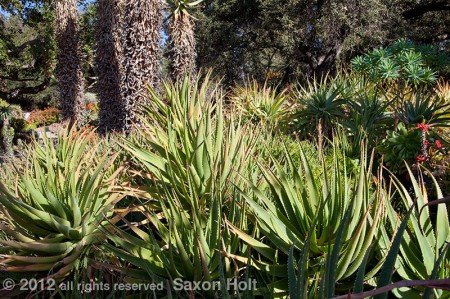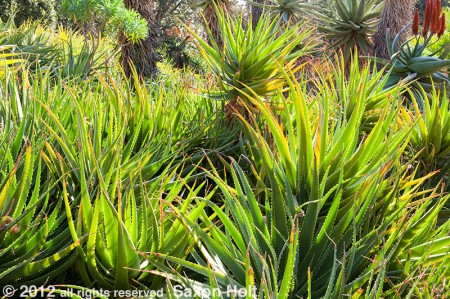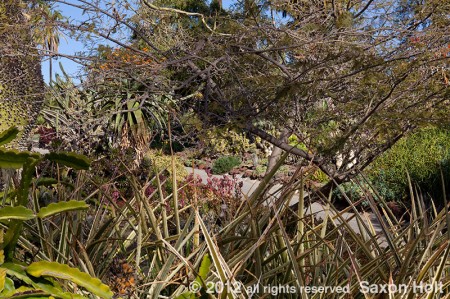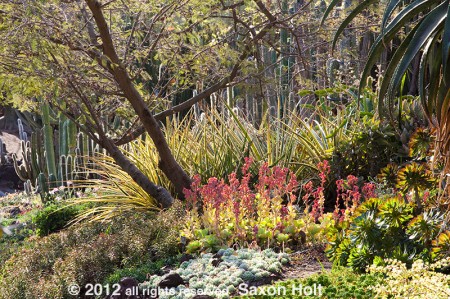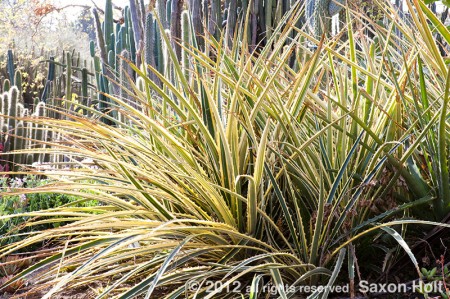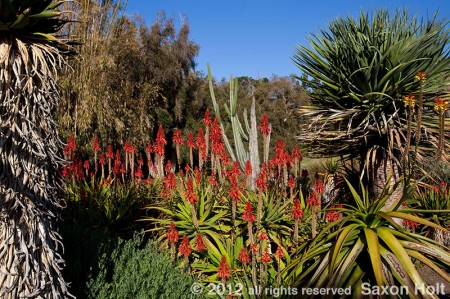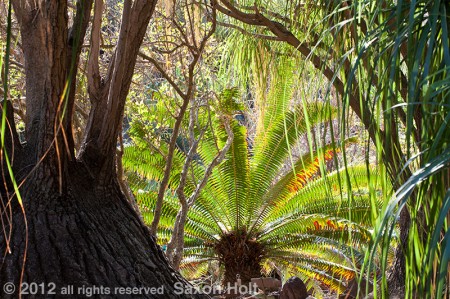 There was a time when I would never shoot in harsh, hard light. Bright, strong, contrasty light tends to have deep, black shadows and no color subtlety. As a garden photographer, when the sun came into the garden I would retreat to the shadows where the light was soft.
There was a time when I would never shoot in harsh, hard light. Bright, strong, contrasty light tends to have deep, black shadows and no color subtlety. As a garden photographer, when the sun came into the garden I would retreat to the shadows where the light was soft.
But I am also a California garden photographer and the sun is an important element of many a garden’s story. People expect to see sunny California gardens, and when a photo can manage to show some bright sun somewhere in the picture, the scene will glow.
So on a recent shoot for an exhibit on prehistoric plants I found myself in the strong sun in the magnifiscent gardens at The Huntington in Southern California. I was looking specifically for Cycads and found the photo above, backlit as I stood in the shade of a grove of Ponytale Palms (Beaucarnea recurvata).
As is common in California, the sun came up strong and with-in an hour the light was too strong for my normal shooting style. But foliage often looks great back-lit and since the sun is still low in the early February morning the potential for a full on back light presented it self.
As it happens, after shooting Cycads and Araucaria I found myself in the Desert Garden which is full of mature succulents. I began looking for photos as the sun got higher. I figured sun is a good feature of a desert photo and succulents often have nice strong graphic shapes that can make striking subjects.
Once I would have given up on finding good photos in this light. A photo like this group of Aloe would never sell:
Ahh, but walk around the scene and shoot back into the sun and the scene altogether changes:
The Aloe foliage is fleshy and transluscent. The sun reveals it, back-lit and shining through.
I began looking for other, even more complex plant combinations:
That is a downright terrible photo but it serves as a great counterpoint to the exact same group of plants seen from the opposite direction:
It really is the same plant combination, photo taken five minutes apart from the green plant by the path in the first photo. Note the the tree shape and the red flowers of the Dudleya.
Now look into the middle of the photo to see the wonderful spikey foliage of a bromeliad,Variegated Hearts of Flame – Bromelia balansae ‘Variegata’. Besides being amazed that a bromeliad can be a garden plant in Southern California, look how back light really explodes through the foliage:
Shall we look at another reason why we should break the Kodak rule of shooting with the sun over our shoulder ?
I suppose some might like the heavy red of the Aloe flowers and the sun full on. Until we look back toward the sun:
The sun now outlines the plants and makes the colors glow.
There a few technical trick to making this work and I will go into those tips in a future lesson – just to keep you coming back …

